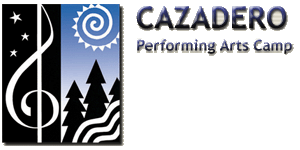Lesson Plan 5: Bugs
of Cazadero
(Grade Level 5-6-7-8)
First posted May 16, 2004 Last
updated October 19, 2005

Remember these points from the Lesson
Plan Homepage:
(1) These lesson plans are not rigid requirements,
but a starting point for the Nature Counselor's
plan for teaching a particular day's experience.
(2) The activity should be fun and emphasize
active learning on the student's part: ask a
question, don't just state a fact.
(3) You should employ hands-on as much as possible.
(4) Plan each session to also allow time for
making entries in the Nature
Journal. |
Prior to the
session
(1) Read the section on the web site on Bugs.
You cannot teach what you do not understand.
(2) Students are always fascinated by insects: they
either hate them or love them, but they are not neutral
towards them. Most students will find it fun to catch
some bugs and examine them. The others will can be drawn
in if you are gentle and encouraging.
(3) Scout out an area that has good bugs on a reliable
basis. Flowers that are in bloom are a sure thing, as
well as the stones in the river when the water level
is low (stoneflies, etc). If you are concerned that
you might not find enough, capture a few and put them
in a container in your pocket or fanny pack.
(4) Observation containers help the students to see
the insects close-up. The simplest ones are white styrofoam
cups, cut a bit short if the bug does not jump or crawl
well.
Session
(1) Start out with a walk toward your observation area.
Look around a bit then sit in the shade.
* What insects can you name? Can you draw a few in
your notebook?
* What do these insects eat for a living? What eats
them?
* What part does the insect play in the web of life?
* Pick your favorite insect. What can you see, hear,
or smell about this insect? Write down a few questions
about your insect. Can you answer them?
* Pick the insect that you hate the most. Why?
* Can you name something that we eat that comes from
an insect? (honey)
(2) Look around a find an insect. If it is a crawling
type, catch it. If it is a flying type, observe it.
You can help the students to "see" what they
are looking at and help them focus their learning about
insects by asking them questions about what they see.
For example, ask questions such as:
* Were is the insect found?
* What is it doing?
* How is this one different from your favorite insect?
* Do you see that this insect has three pairs of legs
and three body parts? Name the parts and how they
function in the insect's life. If winged, note how
the wings attach to the same body segment that the
legs attach to (thorax).
(3) Review the number of legs an insect has. Compare
this to people (one pair;not quite true, mention the
similarity of legs and arms), dogs (two pair), insects
(three pair), spiders (four pair), crabs (five pair),
centipede (supposedly 100 legs), and millipedes (supposedly
1000 legs).
(4) Review the fact that an insect has three body parts
(head, thorax, abdomen).
* How is the head of an insect like your head? How
is it different? (you have mouth parts and eyes on
your head, but no antennea (feelers))
* How is the thorax of an insect like your thorax
(chest)? How is it different? (our lungs are in our
thorax, their "lungs" are in their thorax
and abdomen)
* How are the legs of an insect like your arms? Legs?
How are they different? (our bones are inside, their
"bones" are their shell and it is outside)
(3) Have the students draw the insect you found. Describe
the hard shell like a crab. How does this help the insect?
What problems does it pose?
(4) Look around for another insect. The stoneflies
in the creek are great subjects: don't bite, can't fly, can't jump,
don't move quickly, are always there, look ugly, and
most students have never seen one before. What a great bug!

References
Smithsonian's
Entomology Page

The following analysis of an Insect Lesson Plan is
by Eliza Barclay & Cynthia King, from The
Teacher's Corner
SUBJECTS ADDRESSED:
* Insect Anatomy
* Basic scientific observation process
GRADE LEVELS:
Middle school
STATE STANDARDS ADDRESSED:
* Science as Inquiry: observations, pictures, questions,
and inferences
* Structure and Function of Living Organisms
LESSON PURPOSE OR GOAL:
* Have students understand basic principles of insect
anatomy: 3 legs, 3 body parts
* Give students exposure to exotic and common insect
species
* Engage them in scientific inquiry
LESSON DESCRIPTION:
* Explain basic facts about insect anatomies,
* Ask kids to think about common insects
* Discuss findings
.......................................................................................................................
Back to the Lesson
Plan Homepage
|

